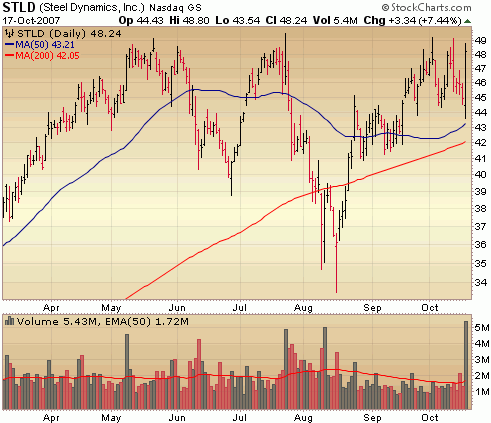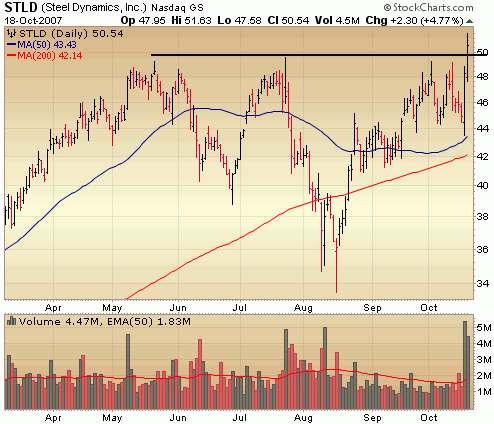Get Naked By Taking The Clothes Off of Your Stock Before You Buy It.
Okay, you just sold the family SUV to put a stop to all that gas price gouging out there and purchased a cute little used hybrid for a net credit of 10 grand plus a $200 rebate. The teaser seminar you attended last week convinced you the stock market would make you a millionaire faster than the rule of 72 and eliminate your worries about diversity in world politics. So…Where should you begin?
Before you call your cousin’s broker, to buy stock in your favorite company, probably the one you work for or one whose name is prominently displayed on the lid of your laptop, take a breath and remember your objective is to make money not to please your ego.
Today that might sound impossible, but I would like to invite you to take a short walk with me to the other side for a view of my favorite investment paradigm.
What if I told you that you could sell the stock you want to own before buying it, without borrowing it to sell it short or spending any of your hard earned money on it. What if I also told you that it would be possible each and every month to net more than 10 times the dividend that attracted you to it to begin with; and build a little capital on the side as well.
The truth can sometimes seem stranger than fiction, but it’s still the truth. That is why this is an investment paradigm. It is knowledge that is hiding behind its own language. It’s no secret. It’s just that sometimes we don’t see what we are looking at. It involves selling an option contract that you do not own. It’s legal and it’s done every day. Follow along; I’ll explain the concept. What you do with it is up to you.
First, if you haven’t already, open and online brokerage account. Do a Google search for a good options site. You won’t want to deal with humans in your trading. They are expensive and they always seem to try to persuade you to do something other than what you know you should be doing. You can open the account for free and use their virtual trading to test the site features before you fund your account. Make sure you request and are granted at least a level 4 option trading status. (Uncovered trades on equities)
You will need to meet certain experience, net worth, and risk tolerance parameters on your application to absolve your broker in advance of any wrong doing. Something to do with compliance and SEC Regs.
For Experience and training: Re-read my blogs here at www.SelfInvestors.com or spend a few evenings perusing the free options classes out there like those hosted by the Options Industry Council. Either will be sufficient to qualify you for “extensive or advanced experience/training” in options. You have to put the time in. Go to:
![]() http://www.888options.com/classes.
http://www.888options.com/classes.
As for your Net worth: You have my permission to add in the value of your dog or cat to get your net worth up near the max.
Risk Tolerance: Make sure to check “Speculation.” Even though we will only be selling what we don’t own. Whenever you sell an Option contract, you incur an obligation until its expiration. (When you buy one you acquire a right.) Some people call it speculation. Some call it insurance. I call it insurance speculation.
With your account now open and if you have at least “$10,000 in marginable securities or cash” in it you can sell an “uncovered” or heaven forbid, what’s called a “naked” contract. If your balance is less, don’t worry, you can turn your naked trade into one with clothes by purchasing a lower priced contract expiring in the same month as the one you sold. For that, your cash reserve requirement is only the amount of the spread between the two strike prices, nominally $250 or $500 per pair of contracts. You are still selling the same contract but now you have to buy “insurance against its decrease in value. I think my Mortgage Banker has the same rule that allows me to sell my house to him without ever owning it.
In my example you incur the obligation to buy the stock you want to own, at the price you wanted to buy it for; but now under the terms of your contract, you only agree to buy it at that price if it is below the agreed and wanted price. Where you wanted to buy it anyway. If it is above your agreed and wanted price when your obligation expires, you pay nothing. But of course you still want the stock so, you simply keep what you sold it for and agree to sell it again. You will receive money and an obligation to buy it if asked to, which is what you want to do. Right?
Now you are simultaneously hoping to buy the stock to make money and not to buy the stock to make money. What do you want? To make money? Yes! It is available no matter which way you turn.
Oops! The stock you wanted to buy at that price just when down in value and darn…. the contract you sold was exercised. To fulfill your obligation, you must now buy the stock where you wanted to buy it in the first place. Darn!
Now you own the stock you wanted to own, at the price you wanted to pay. You rationalize the 10% gain you received on it over the past 3 weeks (annualized 120%+) as helping you buy it at a discount. Because the value has slipped a little you are not quite so sure you want to own the stock after all. You can’t make any cash money until you sell the stock anyway so you decide to try to sell it for more than you had to pay for it. You can legally sell someone the right to buy it from you at a price higher than it is now by selling the obligation to sell it to them, if they ask for it, for say, another 10% of its value.
Owning the stock, gives you the right to sell a call on it. You enter into a contract with someone to sell them your stock for a little more than you paid knowing your offer will expire automatically in 3 weeks if they don’t exercise their option to buy it. The price of the stock stays about the same neither going up or down. Your obligation to sell expires and you once again have to rationalize the 11% gain (annualized 125%) as possibly putting you into a higher tax bracket.
Because the stock is not gaining in value you are becoming less and less interested in owning it. So you arrange with someone else to buy it at the same price the last fellow did a month ago. Cha – Ching! You collect another 9% (119% annualized). This month your stock does move up a little and you are asked to sell it for a little more than you paid. Up a buck for a measly 2.5% gain. (only 30% annualized 😉
Now you are back to cash and up 10 + 11 + 2.5 =23.5% in 90 days or 94% annualized. Your stock seems to be headed up now so you reconsider and are entertaining buying some again. But, why not just sell it again before you buy it. Isn’t the whole idea to make money?
Cheers, 2dimes Barry Brush

![clip_image001[5]](https://selfinvestors.com/tradingstocks/wp-content/uploads/2008/05/clip_image001%5B5%5D_thumb.jpg)

 2DIME’S INVESTOR NOTES
2DIME’S INVESTOR NOTES
